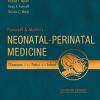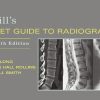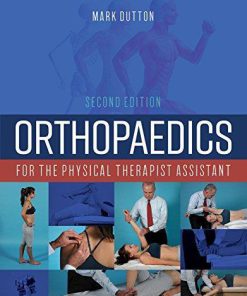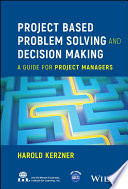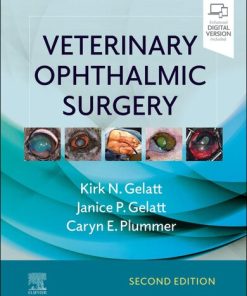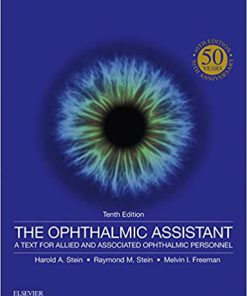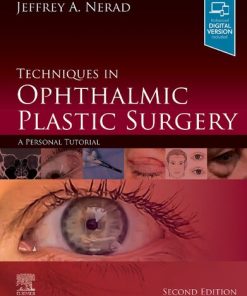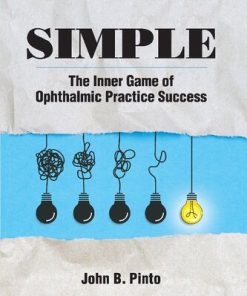The Ophthalmic Assistant A Text for Allied and Associated Ophthalmic Personnel 10th Edition by Harold Stein 0323394796 9780323394796
$50.00 Original price was: $50.00.$25.00Current price is: $25.00.
The Ophthalmic Assistant – A Text for Allied and Associated Ophthalmic Personnel 10th Edition by Harold A. Stein – Ebook PDF Instant Download/DeliveryISBN: 0323394796, 9780323394796
Full download The Ophthalmic Assistant – A Text for Allied and Associated Ophthalmic Personnel 10th Edition after payment.
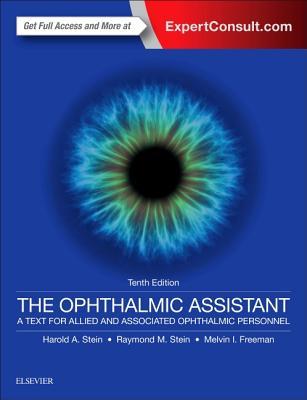
Product details:
ISBN-10 : 0323394796
ISBN-13 : 9780323394796
Author: Harold A. Stein
Now in its tenth edition, the best-selling The Ophthalmic Assistant, by Drs. Harold A. Stein, Raymond M. Stein, and Melvin I. Freeman, is your go-to resource for practical, up-to-date guidance on ocular diseases, surgical procedures, medications, and equipment, as well as paramedical procedures and office management in the ophthalmology, optometry, opticianry or eye care settings. Thoroughly updated content and more than 1,000 full-color illustrations cover all the knowledge and skills you need for your day-to-day duties as well as success on certification and recertification exams. This comprehensive text provides essential learning and practical guidance for ophthalmic assistants, technicians, medical technologists, physician assistants, and all others involved in ocular care, helping each become a valuable asset to the eye care team.
The Ophthalmic Assistant – A Text for Allied and Associated Ophthalmic Personnel 10th Table of contents:
Section One: Basic Sciences
Chapter 1: Anatomy of the eye
Surface anatomy
Tear film
Cornea
Sclera
Uvea
Angle structures
Lens
Vitreous
Retina
Optic nerve
Visual pathway
Ocular muscles
Summary
Self-evaluation questions
Chapter 2: Physiology of the eye
Alignment of the eyes
Looking straight ahead (fixation)
Locking images (fusion)
Eye movements
Looking toward a close object
Seeing in depth
Focusing at near (accommodation)
Transparent pathway for light
Retinal images
Intraocular pressure
Tears
Color vision
Self-evaluation questions
Chapter 3: Optics
Physical optics
Geometric optics
Spherical aberration
Chromatic aberration
Cylinders
Transposition
Practical aspects of optics
Optical illusions
Self-evaluation questions
Chapter 4: Pharmacology
General principles
Complications of locally administered drugs
Prescription writing
Autonomic drugs
Drugs that lower intraocular pressure
Anesthetics
Antiallergic and antiinflammatory agents
Contact lens solutions
Stains
Side effects of systemic medication
Self-evaluation questions
Chapter 5: Microbiology
Bacteria
Viruses
Fungi
Other microbes
Clinical indications for smears and cultures
Taking smears
Making a stain
Specimen collection for culture
Other aids to identify organisms
Summary
Self-evaluation questions
Section Two: Clinical Practice
Chapter 6: Office efficiency and public relations
How to make patients happy
Scheduling appointments
Booking the arriving patient
The reception room
Running late
Scribes
Making future appointments
Financing
Recall cards
Automated voice machines
Filing
Electronic medical and health records
Prescription pads
Office equipment
Personal qualities for improved office efficiency
Improving the patient experience through service recovery
Secretarial duties
Handling the ophthalmologist’s schedule
Handling sales representatives
Handling mail
Medical ethics
In the physician’s absence
Aids in public relations
Patient surveys
Publicity
Advertising
Summary
Self-evaluation questions
Chapter 7: History taking
Organization of a history
History procedure
General information
Chief complaint
History of present illness
Past health, medications, and allergies
Family history
Tips in history taking
Scribes
Summary
Self-evaluation questions
Chapter 8: Preliminary examination
Vision assessment
Measurement of glasses
Accommodation
Convergence
Color vision
Depth perception
External examination
Examination of the ocular muscles
Instillation of eyedrops and ointment
Ophthalmoscopy
Visual fields
Summary
Self-evaluation questions
Chapter 9: Visual function and impairment
Introduction
Aspects of vision loss
Types of vision
Luminance versus illumination
Measurement and assessment of visual loss
Aspects of visual impairment
Visual functions
Why perform visual screening
Testing
Everyday visual experience
Interventions for rehabilitation
Chapter 10: Understanding ophthalmic equipment
Equipment used for refraction
Equipment used to detect muscle imbalance
Instruments used to determine power of lenses
Instruments used to examine the interior of the eye
Instruments used to study the anterior segment of the eye
Instruments used to examine the angle structures of the eye
Instruments used to assess the cornea
Instruments used to determine tear flow
Instruments used to measure intraocular pressure (tonometer)
Special instruments
Computerized corneal topographic analysis
Diagnostic ultrasound: A-scan and B-scan
Radioactive phosphorus
Electroretinography and electrooculography
Lasers
Summary
Self-evaluation questions
Chapter 11: Refractive errors and how to correct them
Emmetropia
Ametropia
Refractometry and refraction
Retinoscopy
Autorefractors
Subjective refining of refraction
Anisometropia
Aniseikonia
Aphakia
When to refract after cataract surgery
Presbyopia
Complaints: how to anticipate them
Glasses checks and how to handle them: 12 key points
Summary
Self-evaluation questions
Chapter 12: History of spectacles
Antiquity
The beginning
Early eyeglasses
Rivet spectacles
Manufacture
The frame
Scissor spectacles and fork glasses
Single lenses and monocles
Spring spectacle frames
Temple pieces and curved earpieces
Lorgnettes
Goggles and sunglasses
Glasses in the Far East
Summary
Chapter 13: Facts about glasses
History
Frames
Dispensing spectacle frames
Lenses
Production of prescription lenses
Care of glasses
Self-evaluation questions
Chapter 14: Rigid contact lenses: basics
Development
Optics
How the corneal contact lens works
Terminology
Designs
Patient examination
Fitting corneal contact lenses
Evaluating contact lenses
Insertion and removal techniques
Care
Evaluating the fit
Adjustments
Problems associated with overwearing contact lenses
Uses
Summary
Self-evaluation questions
Chapter 15: Soft contact lenses
History of hydrophilic lenses
Advantages
Disadvantages
Patient evaluation
Manufacture
Inventory versus diagnostic lenses
Lens inspection
Disinfection
Cleaning
Insertion and removal techniques
Taco test
Precautions for wear
Wearing schedules
Thin and ultrathin lenses
Correction of astigmatism
Medical uses
Extended-wear lenses
Disposable lenses
Innovations in design
Contact lenses in industry
Special occupations
Common questions and answers
Role of the ophthalmic assistant
Self-evaluation questions
Chapter 16: Advanced techniques in soft and rigid contact lens fitting
Abnormal symptoms and signs
Follow-up keratometry
Special lenses
Contact lenses for keratoconus
Role of corneal topography
Manufacturing and modification
Gas-permeable lenses
Hydrogel tinted contact lenses
Recommendations for selection of rigid or soft contact lenses
Self-evaluation questions
Chapter 17: Dry eyes
The tear film
Function of the tears
Tear film assessment
Role of blinking
Tests for dry eyes
Instructions on taking samples
Test for meibomian gland dysfunction
Tear physiology
Grading of dry eyes
Symptoms
Physiology
Sjögren’s syndrome
Management of the dry eye patient: treatment
Summary
Chapter 18: Managing a contact lens practice
Patient management
Planning
Understanding your organization
Finances
Marketing
Advertising
Staff development
The contact lens practice staff
Office equipment and space
Ongoing care
Chapter 19: Visual fields
Preliminary procedures
Facilities for field testing
Confrontation test
Perimeters
Measuring a field on the perimeter
Charts
Special perimetric techniques
Normal visual field
Pathologic defects in the visual field
Contraction of the visual field
Hysterical visual field
Summary
Self-evaluation questions
Chapter 20: Automated visual field testing
Differences between manual and automated perimeters
Understanding threshold
Threshold testing
Frequency doubling Technology
Units of measure
Automated perimetry: basic rules of testing
Analysis software and printouts
Summary
Section Three: Common Clinical Eye Problems
Chapter 21: Ocular injuries
Diagnosis of ocular injury
Conjunctival and corneal foreign bodies
Intraocular foreign bodies
Contusion of the eyelids: black eye
Contusions of the globe
Penetrating eye injuries
Lacerations of the lids
Fractures of the orbit
Chemical injuries
Injuries caused by sports
Injuries caused by radiant energy
Prevention of traumatic injuries to the eye
First-aid care by the ophthalmic assistant
Computed tomography scans (also see Chapter 40)
Magnetic resonance imaging
Self-evaluation questions
Chapter 22: The urgent case
Ocular emergencies
Urgent case: to be seen within the hour
Urgent case: to be seen the same day
Temporal arteritis
Priority case: to be seen within days
Summary
Self-evaluation questions
Chapter 23: Common eye disorders
Conjunctiva
Cornea
Eyelids
Lacrimal apparatus
Self-evaluation questions
Chapter 24: Common retinal disorders
Retinal artery occlusion
Retinal vein occlusion
Diabetic retinopathy
Retinitis pigmentosa
Retinopathy of prematurity
Retinoschisis
Retinal breaks
Retinal detachment
Central serous chorioretinopathy
Changes in the retina from concussion
Foreign body in the eye
Solar maculopathy (eclipse burns of the retina)
Age-related macular degeneration
Ocular manifestations of common systemic diseases
Infectious diseases of the retina and choroids
Malignant melanoma
Retinal imaging modalities: fluorescein angiography
Self-evaluation questions
Chapter 25: Glaucoma
Acknowledgments
Classification
Primary open-angle or chronic glaucoma
Secondary glaucoma
Primary angle-closure glaucoma
Congenital glaucoma
Diagnosis
Treatment
Management of the patient by the ophthalmic assistant
Summary
Self-evaluation questions
Chapter 26: Uveitis
Introduction
Classification of uveitis
Approach to the patient with uveitis
Treatment of uveitis
Self-evaluation questions
Chapter 27: Examination of the newborn, infant, and small child
Approach to parent and child
Vision assessment
External examination
Instillation of eyedrops
Refraction
Retina and optic nerve examination
Common pediatric disorders
Self-evaluation questions
Chapter 28: Maintenance of ophthalmic equipment and instruments
Applanation tonometer
Noncontact tonometer
Lensmeter
Keratometer
Slit-lamp biomicroscope
Phoropter (Figure 28.4)
Projector
Section Four: Surgical Techniques
Chapter 29: Aseptic technique and minor office surgery
Aseptic technique
Minor office surgery
Complications during and after office surgery
Summary
Self-evaluation questions
Chapter 30: The operative patient
Arrangements for the operation
Preparing the child and parent for surgery
Preparing the adult for major ocular surgery
Eye surgery
Types of anesthesia
Self-evaluation questions
Chapter 31: Highlights of ocular surgery
Strabismus surgery
Cataract surgery
Glaucoma surgery
Retinal detachment surgery
Vitreous surgery
Laser surgery
Corneal transplantation
Eyelid surgery
Pterygium removal
Dacryocystorhinostomy
Enucleation and evisceration
Eye dressings
Summary
Self-evaluation questions
Chapter 32: Surgical correction of presbyopia
Introduction
The underlying problem
Surgical corrective procedures
Summary
Chapter 33: Assisting the surgeon
Bedside ophthalmic assistant
Operating room assistant
Amoric environment
Care and handling of surgical instruments
Operating room microscope
Ethical behavior of the ophthalmic assistant
Medicolegal tips
Self-evaluation questions
Chapter 34: Lasers in ophthalmology
Laser theory
Pumping and spontaneous emission
Stimulated emission
Types of lasers and their clinical use
Safety in the laser clinic
Future applications of laser technology
Self-evaluation questions
Chapter 35: Ambulatory surgery
Ambulatory surgery centers
Tips on medical/legal protection
Preparation for admission
Admission for surgery
Postoperative recovery
Summary
Self-evaluation questions
Chapter 36: Refractive surgery
Basic principles of refractive surgery
Photorefractive keratectomy, phototherapeutic keratectomy, and laser in situ keratomileusis
Additional procedures
Surgery: patient selection, counseling, and examination
Summary
Chapter 37: Corneal collagen crosslinking in the management of ectatic diseases
Keratoconus
Pellucid marginal degeneration
Corneal ectasia following LASIK
Development of Corneal Crosslinking
Basic research on safety of CXL
Technique of CXL
Contraindication to CXL
Clinical outcomes of CXL
Topographically linked ablation
Intrastromal corneal rings
Potential future advances in CXL
Summary
Chapter 38: Wavefront aberrations and custom ablation
Section Five: Ocular imaging
Chapter 39: Optical coherence tomography
The technician’s role
Normative databases
Progression analysis
Nonexudative age-related macular degeneration
Exudative age-related macular degeneration
Other macular abnormalities
Vitreomacular traction
Glaucoma
Keratoconus screening
Refractive surgery
Corneal pathologies
Summary
Chapter 40: Computerized corneal topography
Introduction and basics
Clinical Uses
Corneal topography analysis in refractive surgery
Corneal topography and cataract surgery
Corneal topography and contact lens fitting
Keratoconus
Summary
Chapter 41: Specular microscopy
Specular microscope
Endothelial specular photomicrography
Chapter 42: Diagnostic ultrasound
Acknowledgment
General considerations and conventional ultrasound diagnoses
Ultrasound biomicroscopy
Section Six: Special procedures
Chapter 43: Ocular motility, binocular vision, and strabismus
Evaluation of strabismus
Retinal correspondence
Amblyopia
Eccentric fixation
Treatment of strabismus
Summary
Self-evaluation questions
Chapter 44: Ophthalmic photography
Photographic terms
Digital imaging
External photography
Photo slit-lamp biomicrography
Goniography
Endothelial specular photomicrography
Fundus photography
Fluorescein angiography
Video recording
Image presentation
Summary
Self-evaluation questions
Chapter 45: Visual aids for the partially sighted
Factor of age
Low-vision optical devices
Optical aids
Types of magnifying devices (Figures 45.2–45.5)
Lighting
Nonoptical visual aids
The partially sighted child
Selection of a visual aid
Self-evaluation questions
Section Seven: Community ocular programs
Chapter 46: Blind persons in the modern world
Blindness defined
Partial sight and blindness
Recent vision loss
Total blindness
The blind child
Rehabilitation
Available aids
Self-evaluation questions
Chapter 47: Art and the eye
Dedication
El Greco (1541–1614)
The eyes of the Impressionists
Claude Monet (1840–1926)
Vincent van Gogh (1853–1890)
Edgar Degas (1834–1917)
Camille Pissarro (1830–1903)
Mary Cassatt (1844–1926)
Summary
Chapter 48: Reading problems in children
Acknowledgment
Whose problem is it?
Terminology
Act of reading
Types of slow readers
Characteristics of the child with a reading disability
Role of brain and eye dominance
Neurologic factors
Educational considerations
Problems at home
Conditions that are confused with a learning disability
Treatment
Clinical tests
Summary
Self-evaluation questions
Chapter 49: Cardiopulmonary resuscitation
Cardiopulmonary resuscitation
Special situations
Final thoughts
Self-evaluation questions
Section Eight: Expanded roles in eye care delivery
Chapter 50: Computers in ophthalmic practice
Computer basics
Computer components
Computer tasks
Computer-controlled ophthalmologic equipment
Special ophthalmologic applications
Summary
Section Nine: Role of assistants in eye care
Chapter 51: Allied health personnel in ophthalmology
Clinical roles for ophthalmic medical personnel
Education of ophthalmic medical personnel and the certification process
The certification process of ophthalmic medical personnel
Government recognition of ophthalmic training and certification programs
Recertification
Ophthalmic medical personnel subspecialty areas in the JCHAPO family
Ophthalmic medical personnel allied with JCAHPO
Independent allied health personnel in visual science
The future of allied health personnel in ophthalmology
Chapter 52: Ophthalmology ethics
Introduction
Informed consent
Confidentiality
Truth telling
Boundary issues
Multiculturalism
Vulnerable populations
Pediatric ethics
Futility
Medical error
Impaired physicians and ophthalmic professionals
Resource allocation
Research ethics
Innovation
Genetics ethics
Advertising
Fee splitting
Medical industry
Cosmetic surgery
Financial issues
Trainees in patient care
Resolution of ethical dilemmas
Chapter 53: Ophthalmic allied health personnel: scope of practice
Introduction
Defining scope of practice
Licensure and certification
Determining the scope of practice
Insurance risk and malpractice
Privacy practices
Treatment
Payment
Provider internal operations
Law enforcement
Public health reporting
Ethics and scope of practice
Summary
Chapter 54: Testing and certification of ophthalmic skills
Introduction
Knowledge-based examinations
Examination format and administration
Skill-based examinations
Summary
Chapter 55: The development of ophthalmic assistants in North America
Introduction and history
Nature of the work
Working conditions
Chapter 56: Ophthalmic assisting in the international community and in the prevention of blindness
Acknowledgments
Introduction
VISION 2020: The Right to Sight
Latin America
Sub-Saharan Africa
North Africa and the Middle East
South and Southeast Asia
Ophthalmic assistants elsewhere
Summary
Section Ten: Atlas of clinical ophthalmic disorders
Chapter 57: Atlas of common eye diseases and disorders
References to Figures
People also search for The Ophthalmic Assistant – A Text for Allied and Associated Ophthalmic Personnel 10th:
the ophthalmic assistant tenth edition
the ophthalmic assistant 11th edition pdf free download
what is the role of an ophthalmic assistant
what is the salary of an ophthalmic assistant
what are the duties of an ophthalmic assistant
Tags: The Ophthalmic Assistant, A Text, Allied, Associated Ophthalmic, Personnel, Harold Stein
You may also like…
Business & Economics - Management & Leadership
Strategic Management: Text and Case 10th Edition Gregory Dess
Business & Economics - Project Management
Project Based Problem Solving and Decision Making: A Guide for Project Managers Harold Kerzner
Education Studies & Teaching
Concepts Of Chemical Dependency 10th Edition Harold E. Doweiko
Uncategorized
The Ophthalmic Assistant E-Book: A Text for Allied and Associated Ophthalmic Personnel
Medicine - Ophthalmology
Techniques in Ophthalmic Plastic Surgery: A Personal Tutorial 2nd Edition Jeffrey A. Nerad Md
Uncategorized
Simple : the inner game of ophthalmic practice success Second Edition John Brigham Pinto


